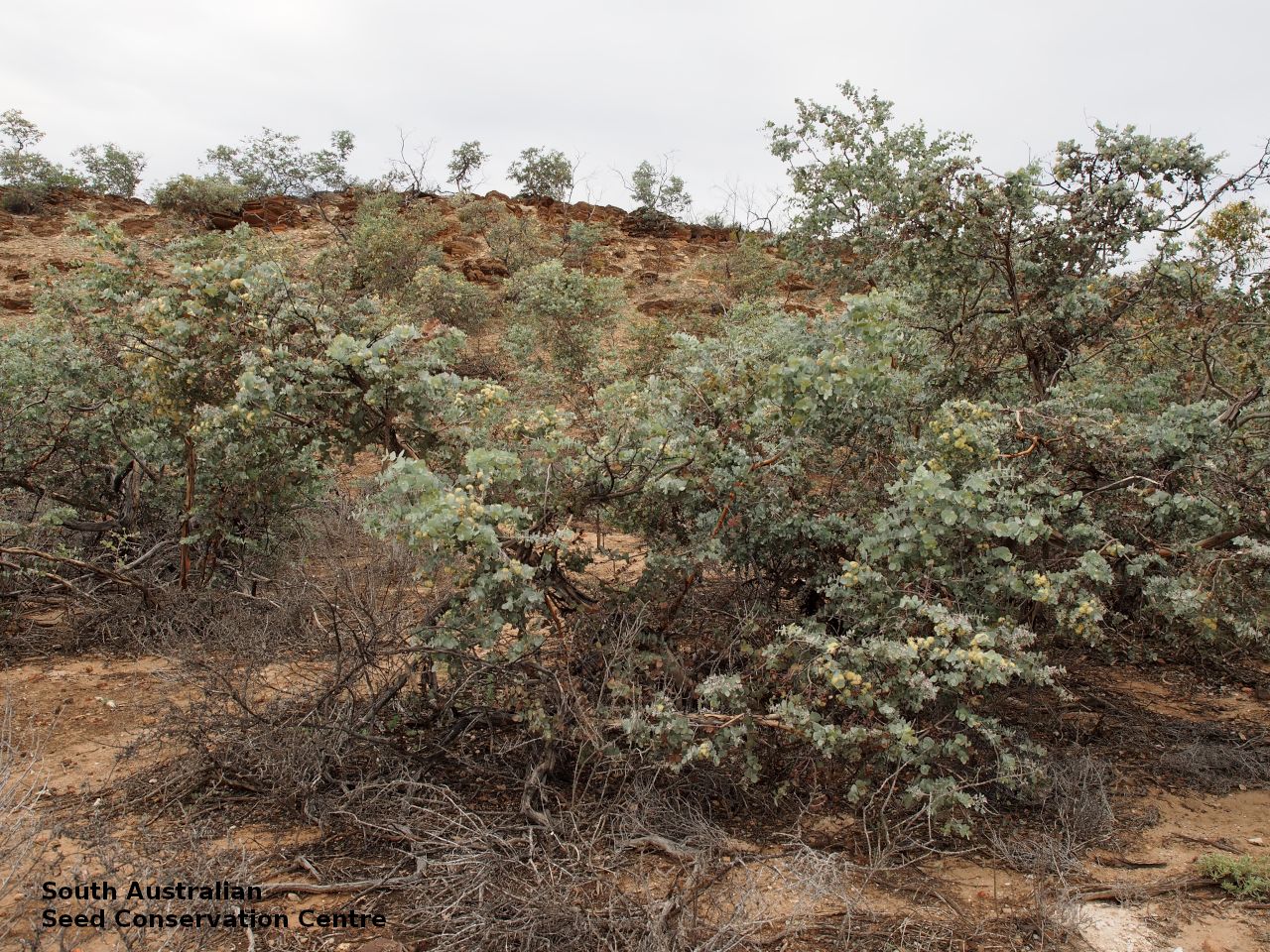
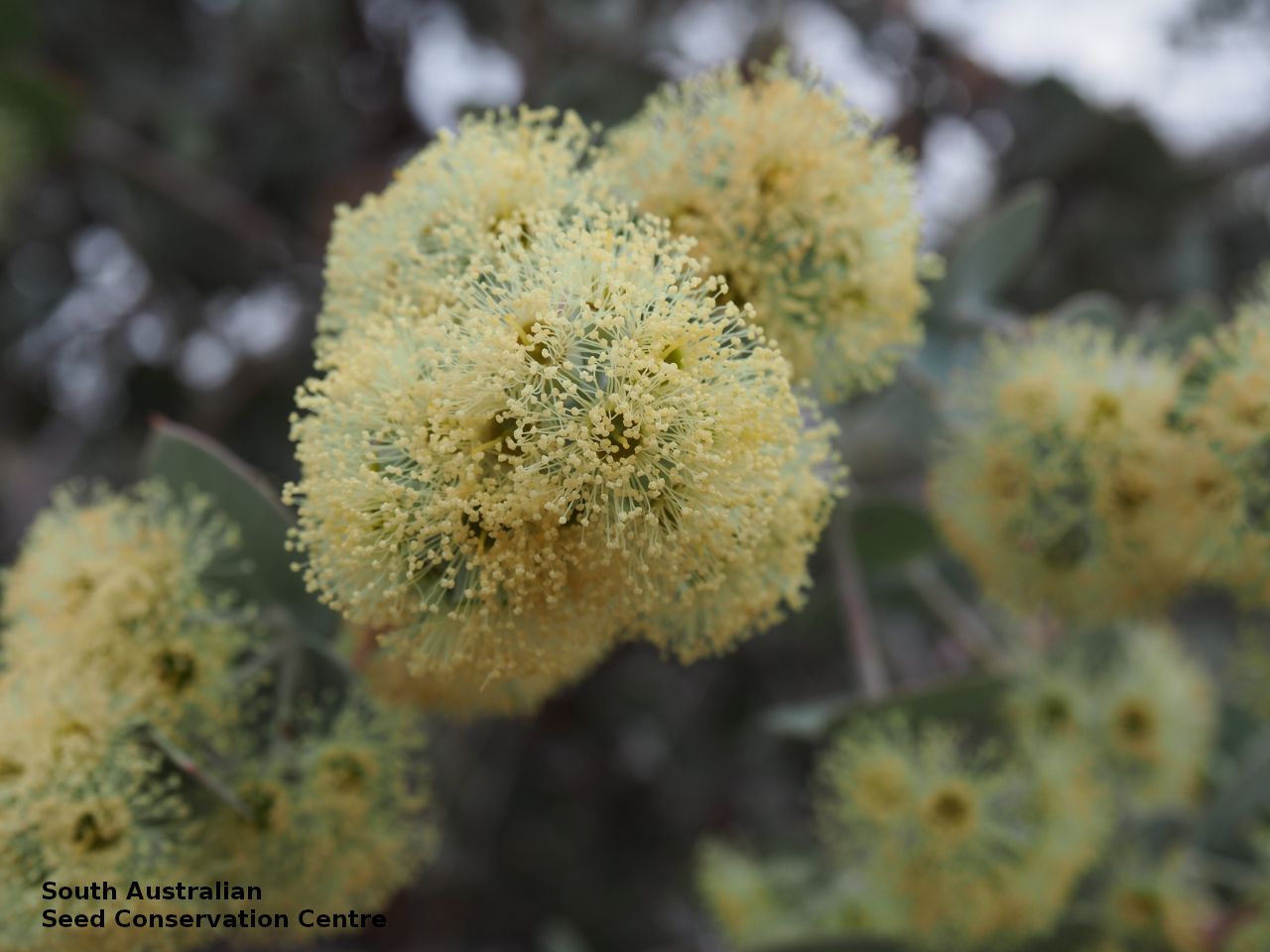
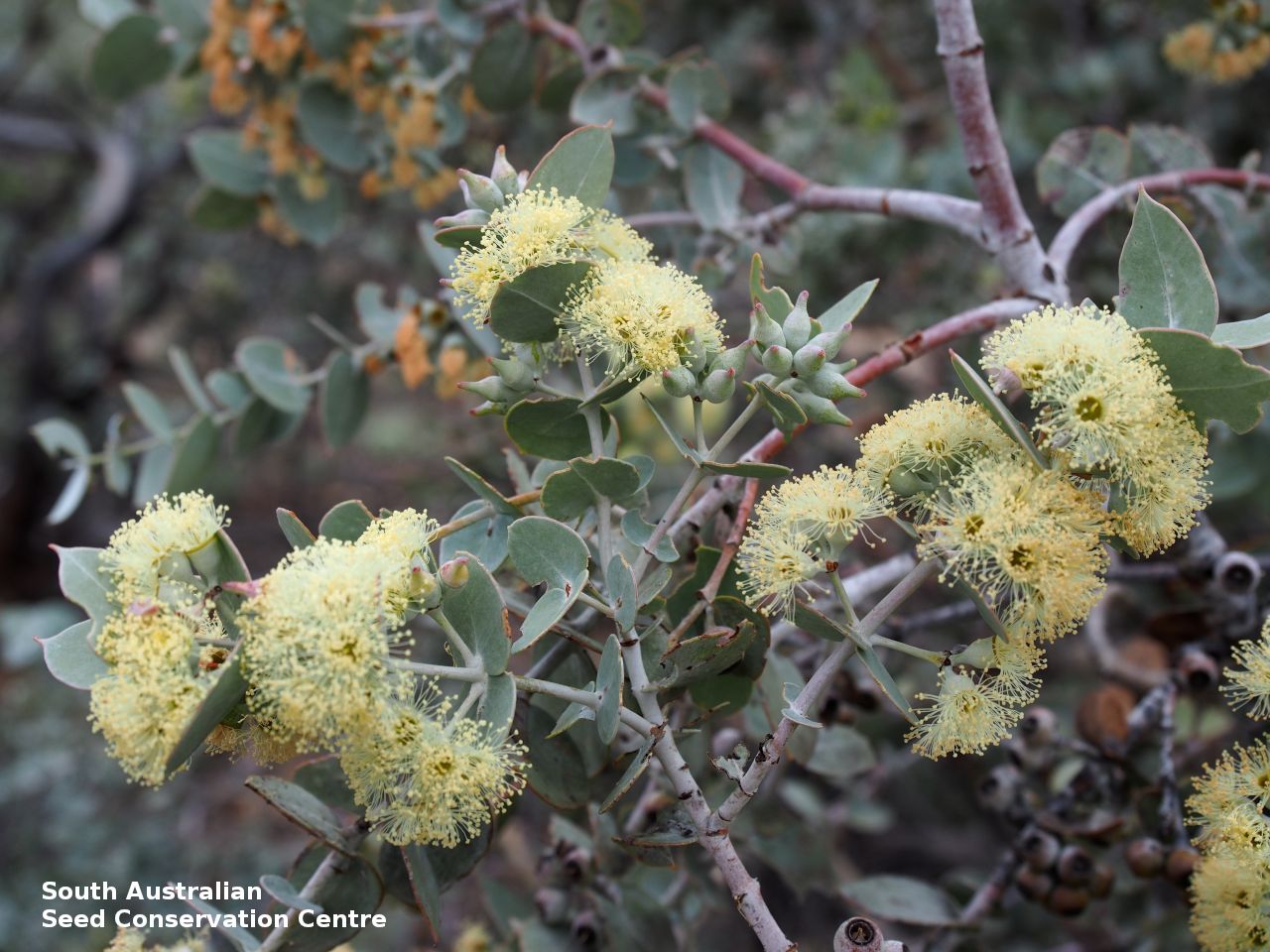
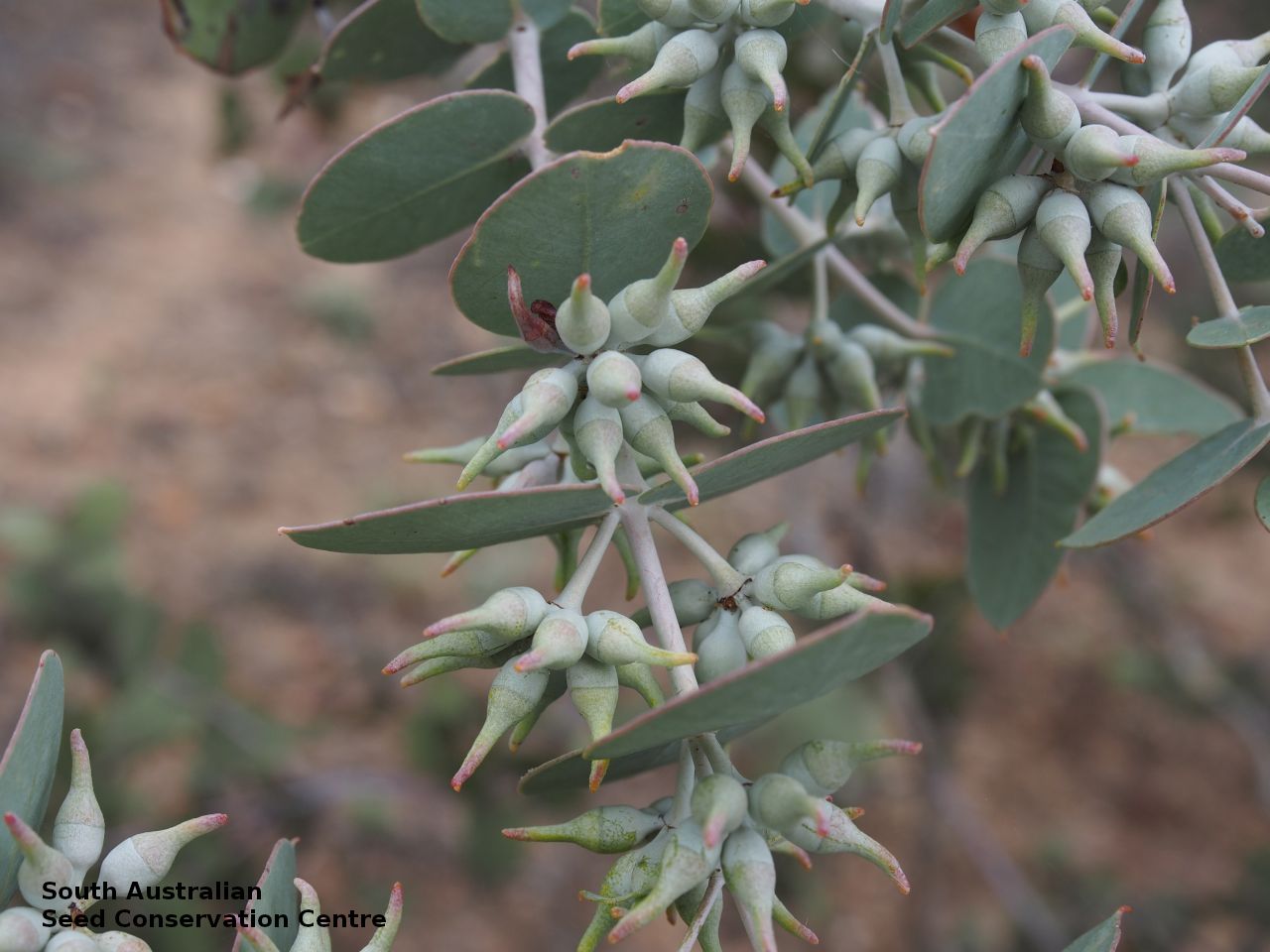
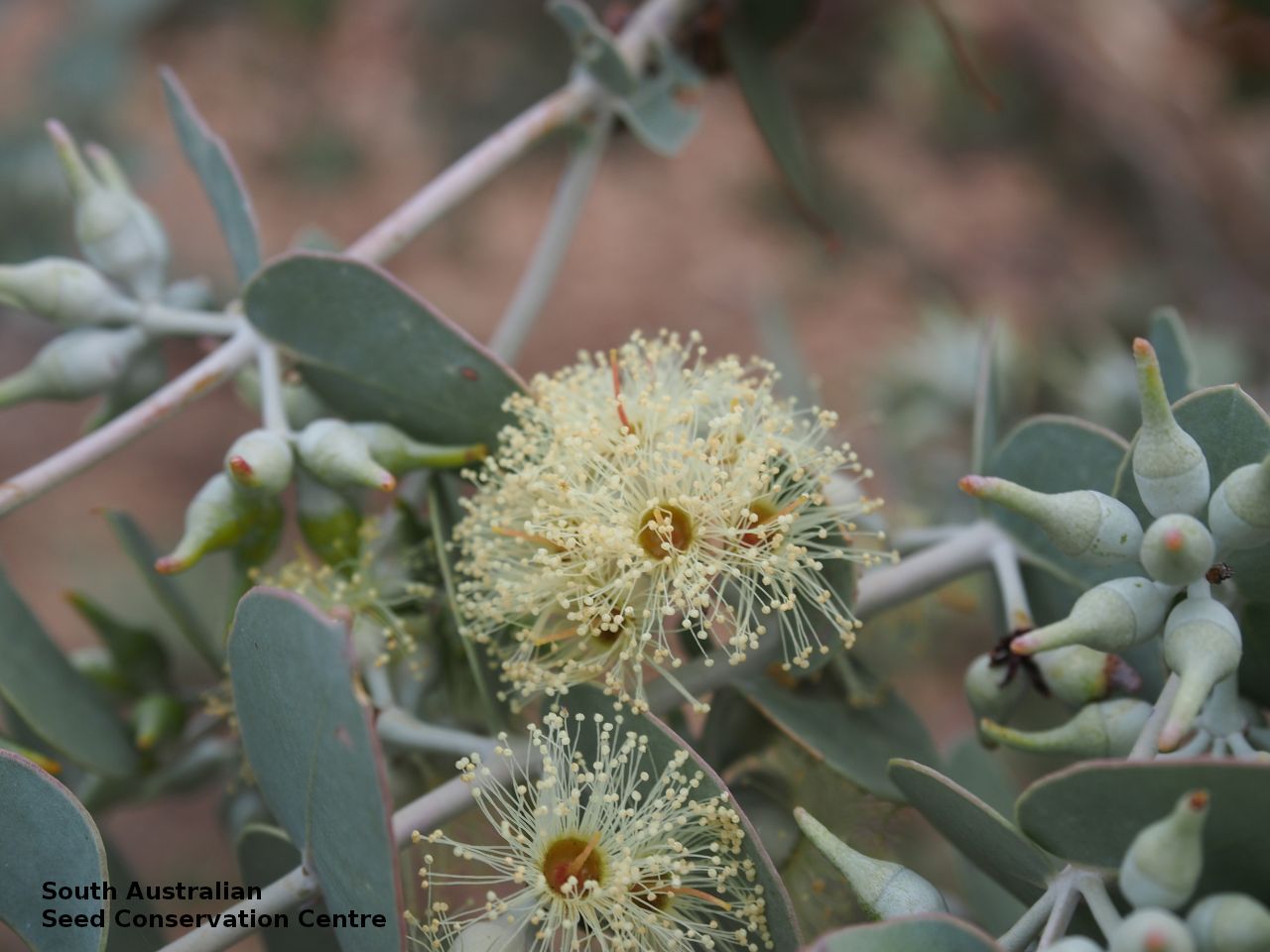
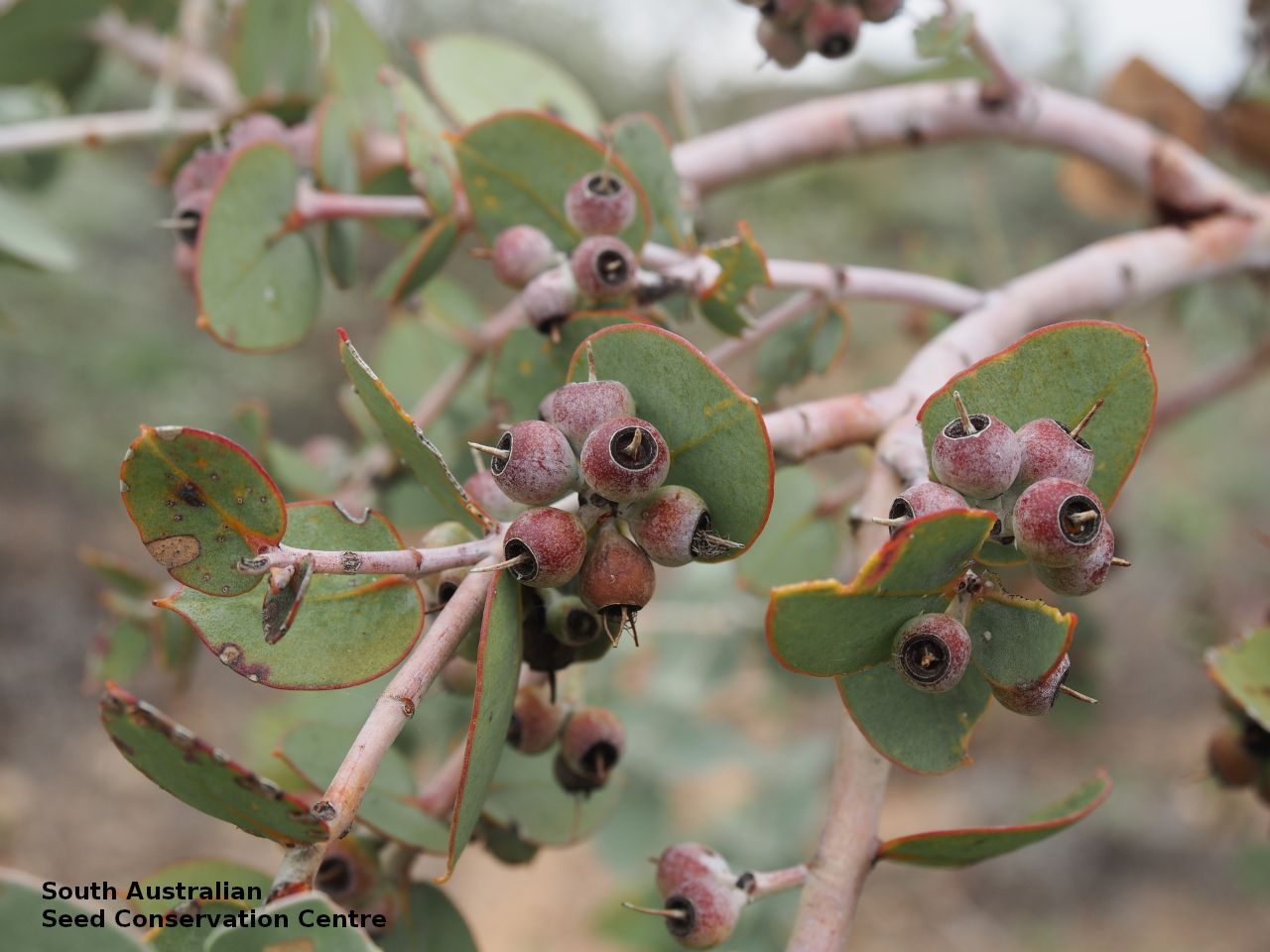
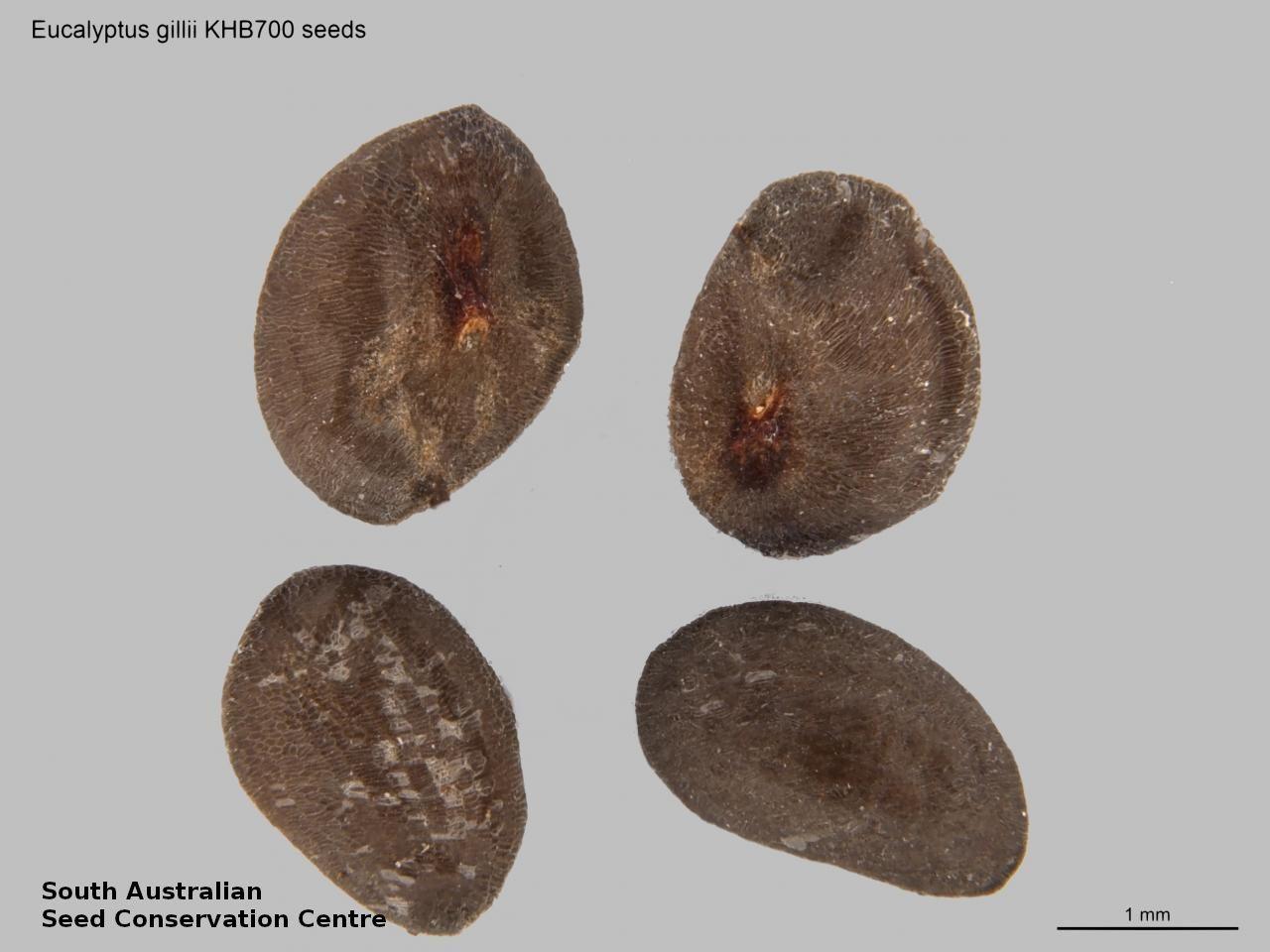

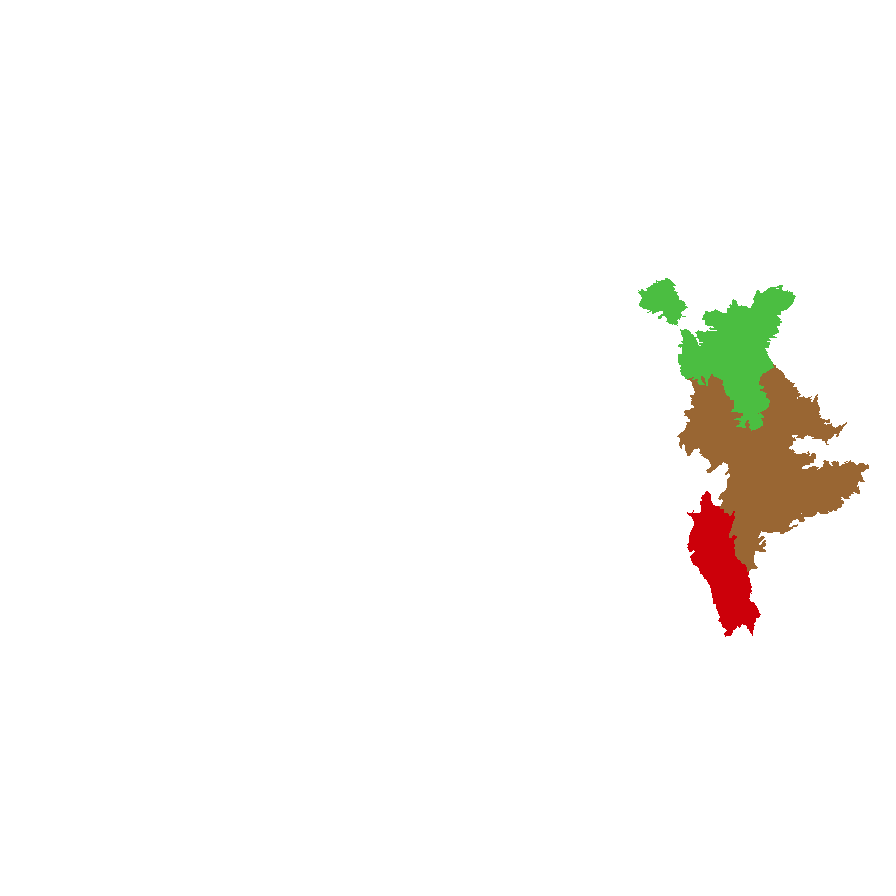
Botanical art
Prior names
Eucalyptus gillii var. petiolaris
Etymology
Eucalyptus from the Greek 'eu' meaning well and 'calyptos' meaning covered; alluding to the cap or lid which covers the stamens in the bud. Gillii named after Walter W. Gill (1851-1929), a Conservator of Forests in South Australia who collected the type specimen and sent it J.H. Maiden, who named the species.
Distribution and status
Found mainly in the northern Flinders Ranges with scattered populations south around Yunta in South Australia, growing in open mallee in gullies, slopes and ridges of undulating hills on calcareous shallow grey loams and gravelly red loams over limestone and slate. Also foun din New South Wales. Native. Uncommon in South Australia. Rare in New South Wales.
Herbarium regions: Lake Eyre, Flinders Ranges, Eastern
NRM region: South Australian Arid Lands
AVH map: SA distribution map (external link)
Plant description
Multi-stemmed mallee to 8 m high with crooked stems and bark smooth and waxy, yellowish or reddish to pale-grey, often rough and fissured or in coarse flakes below. Juvenile leaves sessile, very waxy, ovate, dull greyish. Mature crown consist of juvenile leaves that are opposite, sessile or with short stalk, orbicular to ovate, to 61 mm long ang 45 mm wide, waxy, dull, greyish. Flowers in groups of 7-9 in the axils. Buds to 18 mm long and 5 mm wide, smooth, dull and waxy, bud-cap horn-shaped longer than the base. Flowers pale creamy-yellow. Flowering between August and January. Fruits are round to barrel-shaped fruit to 9 mm long and 8.5 mm wide, waxy at first, disc descending, valves 3 to 4, fragile, needle-like, protruding well beyond the rim. Seeds are dark brown ovoid seed to 2.5 mm long and 2 mm wide. Seed embryo type is folded.
Seed collection and propagation
Collect seeds between January and December. Collect mature fruits that are dark and hard (difficult to break with a finger nail), with the valves un-open any time of year. Leave the fruits in a breathable container in a dry room for one to two weeks. This allows the valves on the fruit to open and release the seeds. Separate the seeds by placing all the materials into a bucket and shaking it to dislodge the seeds. Pass the material through a sieve to separate the unwanted material. The finer material will contain both seeds (soft) and frass (hard) usually distinguishable from each other but can be very similar in shape and colour. With finer sieves, the seeds can be separated from the frass but this is not essential for storage or propagation. Store the seeds with a desiccant such as dried silica beads or dry rice, in an air tight container in a cool and dry place. From two collections, the seed viability were average to high, ranging from 70% to 95%. Seeds are non-dormant, viable seed should germinate readily.
| Location | No. of seeds (weight grams) | Number of plants | Date collected | Collection number Collection location | Date stored | % Viability | Storage temperature |
|---|---|---|---|---|---|---|---|
| BGA MSB | 7,200 (6.93 g) 7,200 (6.93 g) | 40 | 24-Nov-2005 | DJD239 Flinders Ranges | 8-Aug-2006 | 95% | -18°C |
| BGA | 7,000 (6.13 g) | 50+ | 31-Aug-2012 | KHB700 Flinders Ranges | 24-Mar-2015 | 70% | -18°C |
Number of plants: This is the number of plants from which the seeds were collected.
Collection location: The Herbarium of South Australia's region name.
% Viability: Percentage of filled healthy seeds determined by a cut test or x-ray.